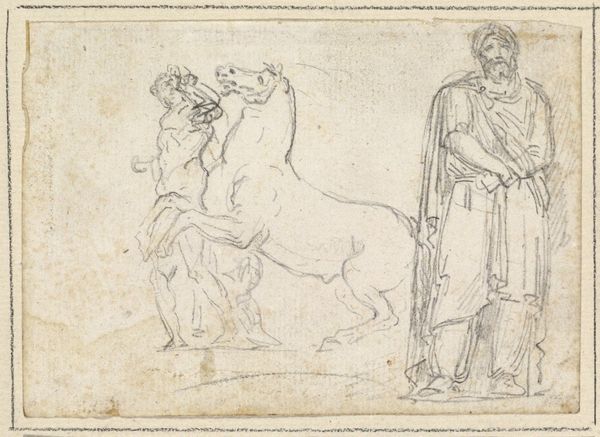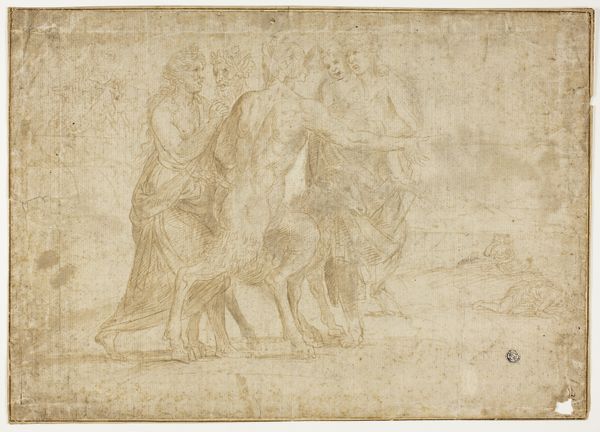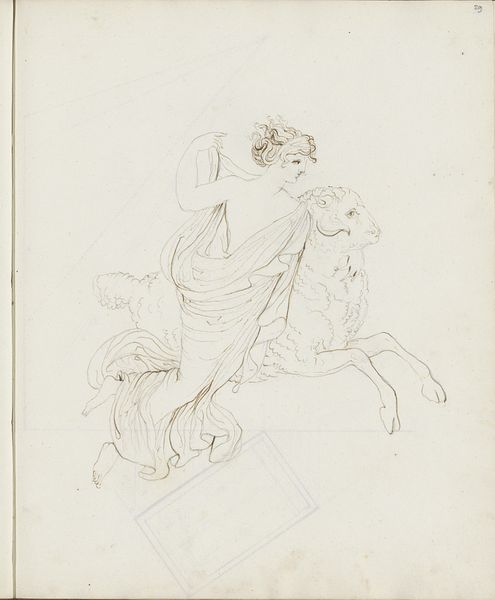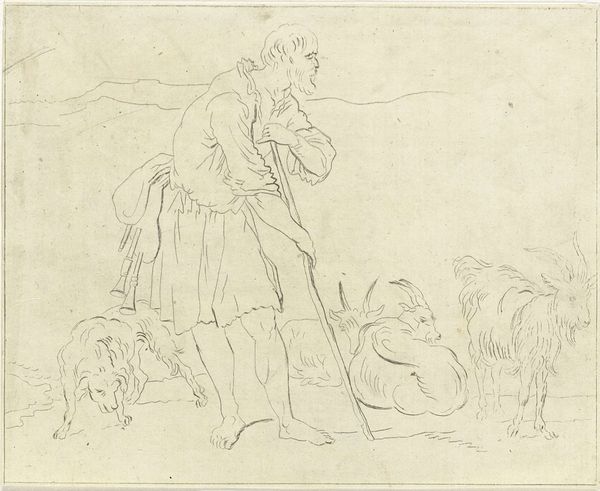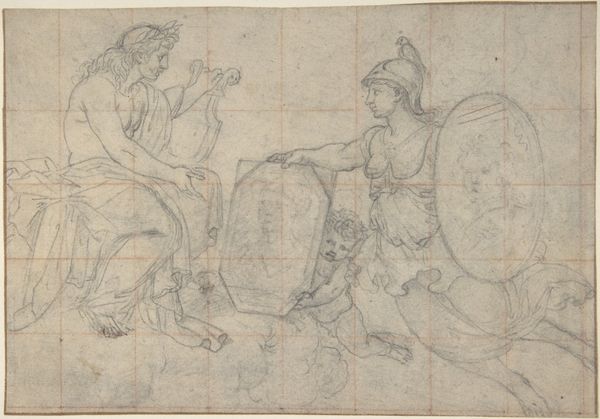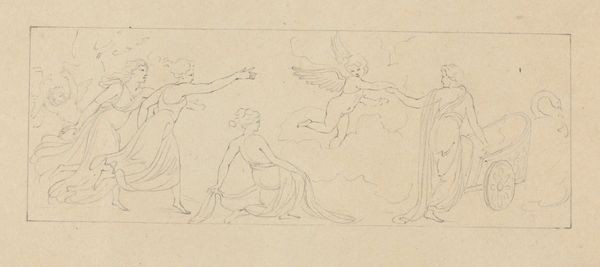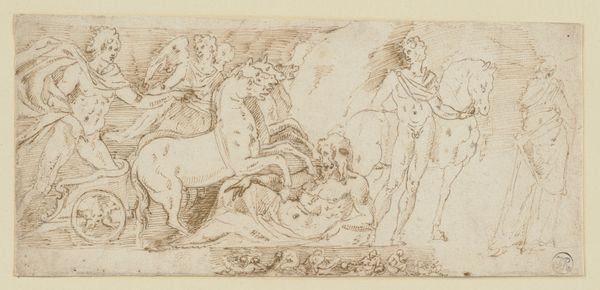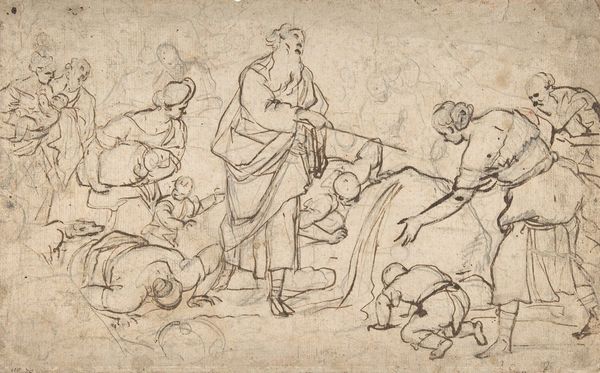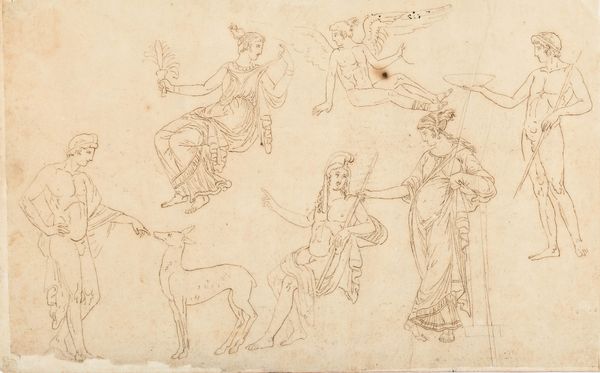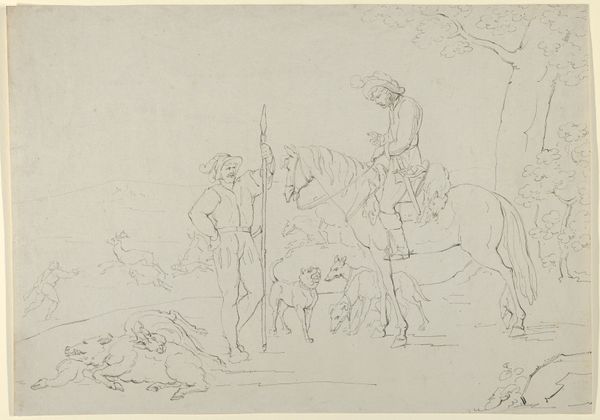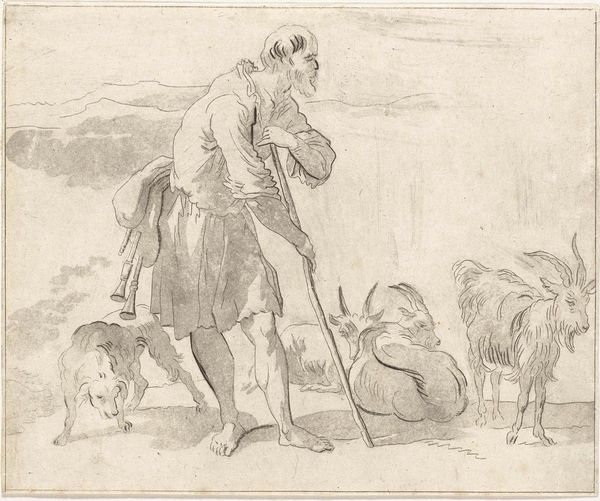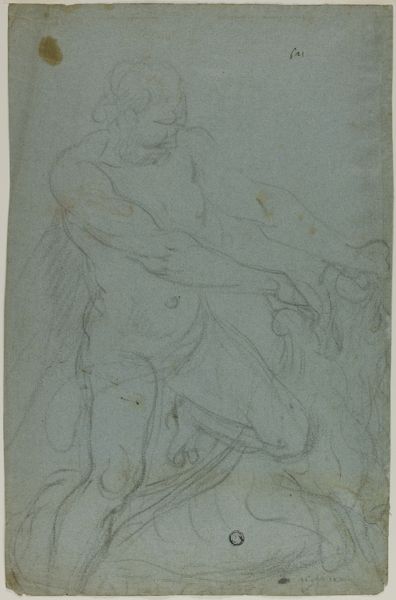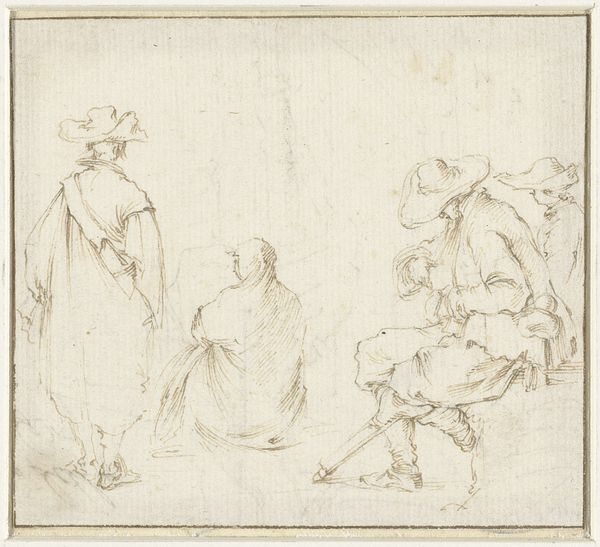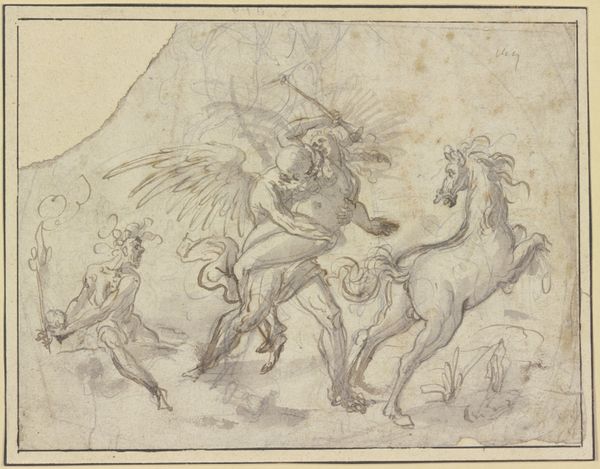
Staande vrouw en zittende man aan weerszijden van een geit 1780 - 1849
0:00
0:00
drawing, paper, pencil
#
drawing
#
neoclacissism
#
toned paper
#
light pencil work
#
quirky sketch
#
pencil sketch
#
old engraving style
#
landscape
#
figuration
#
paper
#
personal sketchbook
#
pen-ink sketch
#
pencil
#
pen work
#
sketchbook drawing
#
sketchbook art
Dimensions: height 104 mm, width 137 mm
Copyright: Rijks Museum: Open Domain
Curator: What a fascinating sketch! This is "Standing Woman and Seated Man on Either Side of a Goat" by David-Pierre Giottino Humbert de Superville, likely created between 1780 and 1849. It’s a pencil drawing. Editor: The line work is so delicate! There's a wonderful sense of airiness in the figures, especially with the goat, which seems almost translucent. I am immediately struck by how neoclassical it seems. Curator: Yes, you’ve pinpointed its movement affiliation perfectly. This sketch gestures toward neoclassicism, particularly its engagement with classical forms and ideals. We see the draped garments, the serene poses – a visual language deeply influenced by ancient Greek and Roman art. Looking at it through a contemporary lens, though, I find myself considering the gender dynamics at play. The woman stands, almost offering something to the goat, while the man is seated, seemingly observing. Editor: That's a rich interpretation. From a purely formal perspective, the composition emphasizes a clear, almost staged arrangement. The lines are clean, precise, and contribute to an overall sense of balance and harmony typical of neoclassical artwork. The composition itself creates a triangular shape from the man's posture on the right to the woman holding the goat on the left. Curator: And yet, within that balance, there's perhaps a subtle commentary on power and observation. Who gets to act and who is relegated to witnessing? The goat itself could be a symbol—perhaps of fertility, sacrifice, or even the untamed aspects of nature, mediated through these human figures. Considering the artwork was likely made at a time of political upheaval in Europe, such as the French Revolution, could this pastoral image be seen as an idyllic respite, or as commentary on the privileged classes removed from labor. Editor: It’s interesting to layer those political considerations over such clean, spare lines. To me, the artist seems most focused on the beauty and accuracy of the human form, but, of course, one does not negate the other. Curator: Indeed! It is precisely in holding these multiple readings simultaneously – the formal and the socio-political – that this modest drawing reveals its complexity and relevance, even today. Editor: It seems so understated, yet contains so much for our curiousity. It highlights how a seemingly simple composition can spark a richer discussion, doesn't it?
Comments
No comments
Be the first to comment and join the conversation on the ultimate creative platform.
